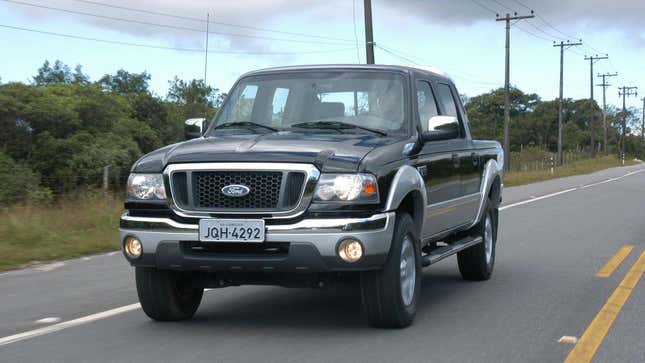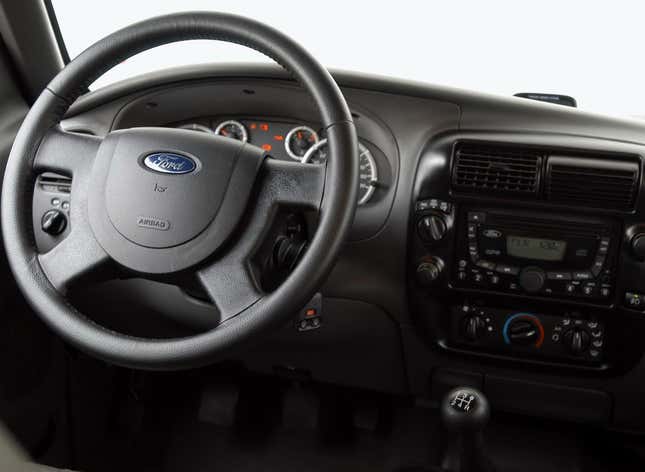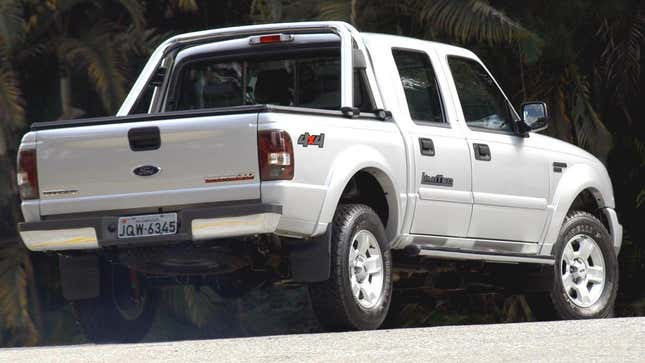
By definition, a big truck like a Ford F-150 or Chevy Silverado struggles to be small. Even in its smallest, most trucky configuration — a two-door single cab — a full-size truck is relatively large and comes with a sizable bed for hauling cargo. But a small truck like the third-generation Ford Ranger can do a pretty good impression of a big truck by adding two doors.
The closest the U.S. ever got to a Ford Ranger with four full doors prior to the return of the Ranger in 2019, when the fourth-gen model debuted in America, was the Explorer Sport Trac. But Ford did, in fact, make a four-door (or “SuperCrew” Ranger) on the third-gen platform; Ford just never sold it here, opting instead to make the double cab Ranger exclusive to Latin American markets.
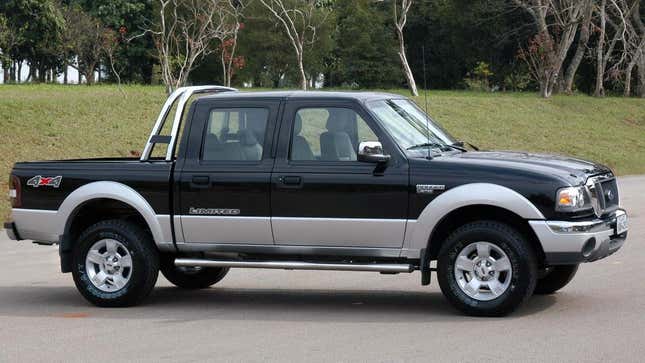
In Argentina, Brazil and Mexico, among others, Ford sold the familiar Ranger to those who wanted a small truck with enough room for a family or group of workers. Seeing one of these little big trucks on the border is a hoot because the proportions always seem slightly off.
The bigger cab and stubby five-foot bed makes the Ranger look like a caricature of itself. Maybe that’s why it doesn’t bother me whenever I see one, and it’s one of few four-door pickups I actively root for — the others being the similarly weird four-door Chevy S-10 and long bed, double cab Nissan Frontier of the same era.
That’s why it strikes me as odd that Ford never sold the four-door Ranger in the U.S.; by the early aughts, Toyota, Nissan, Chevy and Dodge all sold a four door compact truck. Or rather a midsizer, since that’s around the time that midsize trucks supplanted compacts.
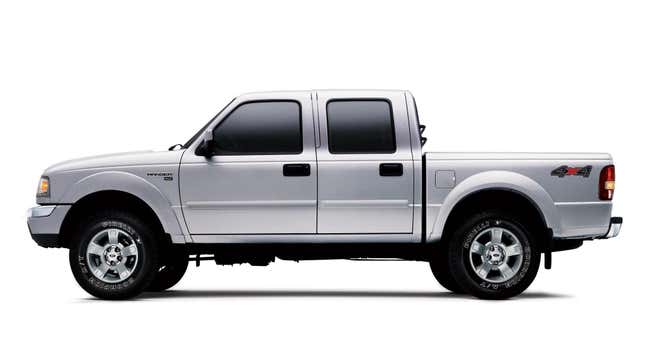
The Explorer Sport Trac might very well have been a better match in terms of size and mechanical output to duke it out with rivals. But, in retrospect, the Sport Trac had no staying power. It seems like a flash in the pan compared to long-running badges like Tacoma, Frontier or the Ranger itself.
Of course, it’s unlikely that Ford would’ve brought a vehicle conceived of by its Argentina subsidiary, which came up with the double cab Ranger due to the unexpected popularity of the U.S. Ranger in South America. But importing a truck designed for another market can be a success, as in the case of the Australian-designed T6 platform, which underpinned the 2019 Ranger.
I guess I just love a quirky little truck, and the old double cab Ranger is quirky. It looks wonderfully anachronistic with its two-tone paint finish and chrome accents on the side mirror caps and bumpers. It even came with the option for a turbocharged 2.5-liter four-cylinder diesel engine. A manual transmission was standard equipment, as it should be. The U.S. would get the last laugh with its own four-door version, but by then it wasn’t really recognizable as the little Ranger anymore.
